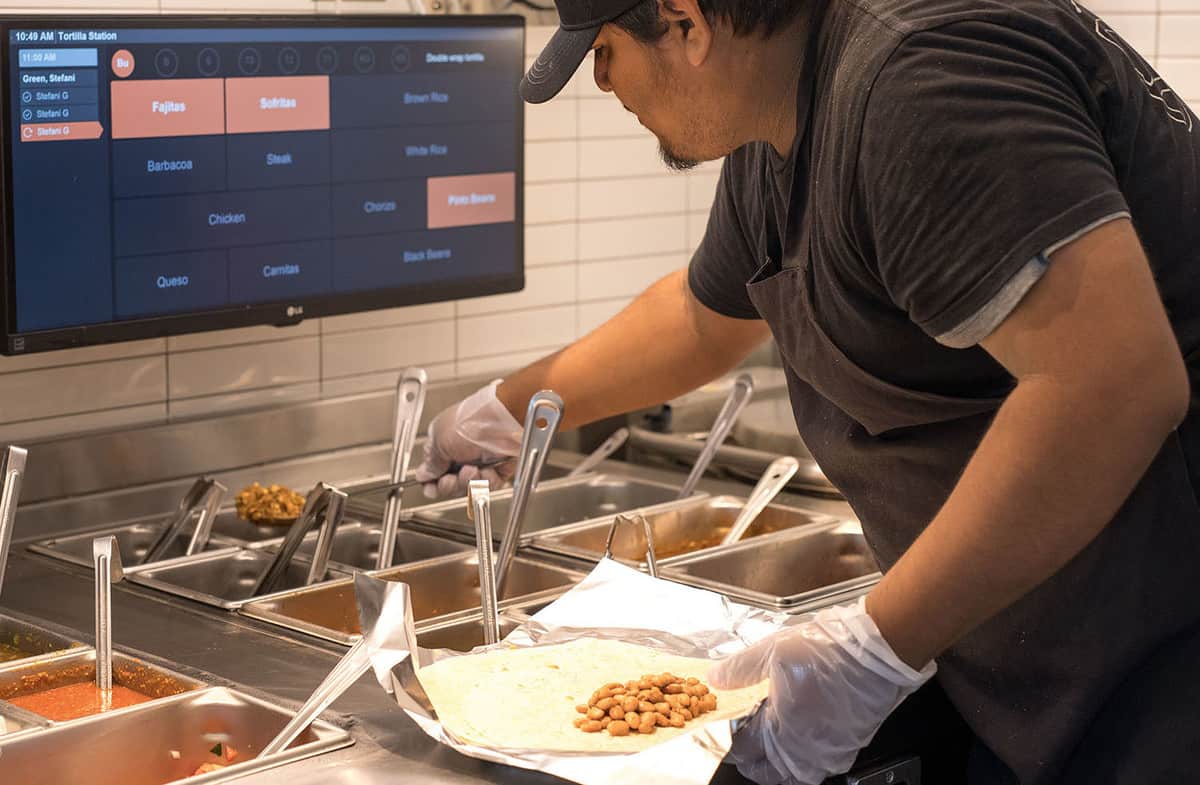Even as its restaurants’ dining rooms reopen, Chipotle Mexican Grill (NYSE: CMG) is seeing record digital revenue in the first quarter of 2021, with digital food sales now reaching 50% of total sales, the company said on its Q1 earnings call this week.
“We’re feeling great about where we are. Consumer sentiment is definitely one where they want to get back out to socialize and get back into the dining rooms and have that in-dining experience,” Chairman and CEO Brian Niccol said on the earnings call. “And then, at the same time, for those occasions that they’ve built, the behaviors around digitally, those are remaining in the business and I think that’s why you’re seeing our results in Q1.”
For the quarter, Chipotle reported sales of $1.7 billion, a 23.4% increase year-over-year. Digital sales increased 133.9% year-over-year to $870 million, Niccol said. In its fiscal year 2020 earnings report, Chipotle said digital sales increased 170% in 2020 over 2019.
As one of the first major national restaurant chains to announce Q1 earnings, Chipotle provides a peek into where the future of dining may be going. More chains are announcing ghost kitchens and other digital-only offerings. Chipotle has also introduced Chipotlane’s — drive-thru service for customers who place orders directly through the Chipotle app. The company opened 40 new restaurants in Q1 and 26 had Chipotlanes. There are 69 total Chipotlanes in the chain. New lanes are producing 17% higher overall digital sales than non-Chipotlanes locations, CFO Jack Hartung said.
Chipotle also launched its first Chipotle Digital Kitchen in November in Highland Falls, New York. The prototype digital kitchens are open for pickup and delivery only. The digital kitchens include special items only available online, including a handcrafted quesadilla.
“The benefits of a digital-only offering are that it leverages our digital scale while removing operational friction by utilizing our digital kitchen,” Niccol said. “We’re encouraged by its performance thus far with an incidence mix of approximately 10% and expect [it] to remain a guest favorite moving forward.”
Even as digital grows, though, Chipotle is still seeing a lower margin on these orders.
“From a dollar standpoint, they’re pretty close,” Hartung said. “When you are charging higher prices, you’re grossing up the sales. And so it makes it a little harder to fully capture that margin. But I would say, we’re within striking distance [of margin equality] … maybe a few percentage points away if we wanted to completely equalize the margin on an in-store transaction for a delivery.”
Still, the company is invested in its online and digital strategies, Niccol said.
“Our digital communication strategy involves supercharging the superfans who are true advocates,” he said. “Content on social platforms is a key way we interact with our guests. The angle for all of our creative initiatives is to drive culture, drive a difference and ultimately drive a purchase.”
Related:
Read: Chipotle invests in self-driving startup Nuro as it prepares for delivery’s future
Read: Applebee’s dives into ghost kitchens, delivery-only brands
Niccol said March set a record for digital transactions and over 800,000 app downloads. About 40% of overall delivery orders were placed through the Chipotle app, and digital pickup orders represented more than half of digital sales in Q1.
“Our digital sales are a sticky, frictionless and convenient experience as evidenced by our April digital sales mix holding around 50%,” Niccol said. “Aided by the quesadilla launch, our digital sales are now slightly above the COVID peak from last year, while we’ve recovered roughly 60% of in-restaurant sales as dining rooms have reopened. We also continued to see outside digital performance in Chipotlanes, which have revolutionized the drive-thru experience towards order-ahead for pickup transactions, which is our most profitable channel.”
Niccol said the company would continue to invest in technology to secure Chipotle’s place in the future of food service. This includes more Chipotlanes, alternative store formats, digital-only menu items, and continued app and website enhancements.
It also includes the company’s recent investment in Nuro, a self-driving vehicle startup.
“Nuro uses robotics in their fleet of on-road, occupantless and autonomous vehicles to deliver everyday consumer goods and we believe has the potential to take the delivery experience to the next level,” he said.
In November, Nuro announced a $500 million Series C round of funding led by funds and accounts advised by T. Rowe Price Associates, with participation from new investors including Fidelity Management & Research Co. LLC and Baillie Gifford. The round also includes existing investors such as SoftBank Vision Fund 1 and Greylock. In March, Chipotle revealed it too had participated in the round.
“We are always seeking opportunities that provide innovative solutions for increasing access and convenience for our guests,” Curt Garner, Chipotle’s chief technology officer, said at the time. “Nuro could change the traditional delivery model, and we believe consumers are going to continue to seek options and additional access points for how and where they enjoy their food.”
Click for more Modern Shipper articles by Brian Straight.
You may also like:
Social Auto Transport raises $1.5M in seed funding to expand gig economy auto-moving business
Bringg’s collaboration with Uber opens new doors for e-commerce











